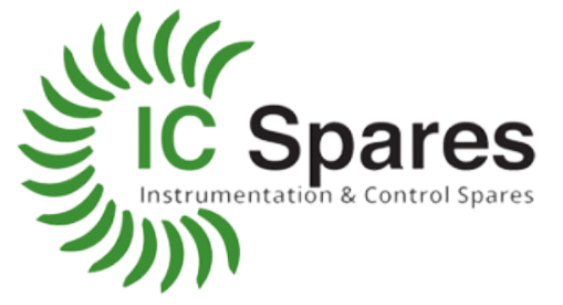Clean input power: The Siemens Perfect Harmony GH180 9000 HP VFD with 12470 Volts features a clean input power, which helps to protect the drive and the electrical system from disturbances. This is achieved through the use of a filter that removes harmonics and other unwanted transients from the input voltage. This helps to extend the lifespan of the drive and the electrical system, and it also reduces noise and vibration.
Sinusoidal output power (waveforms): The Siemens Perfect Harmony GH180 9000 HP VFD with 12470 Volts produces sinusoidal output power waveforms, which are gentle on motors and other equipment. This helps to extend the lifespan of motors and other equipment, and it also reduces noise and vibration. Additionally, the sinusoidal output power waveforms help to improve the efficiency of the drive and the motor, which can save energy costs.
Maximized availability: The Siemens Perfect Harmony GH180 9000 HP VFD with 12470 Volts is designed for maximum availability, with features such as cell bypass and cell redundancy. Cell bypass allows the drive to continue operating even if one or more power cells fail. Cell redundancy provides additional protection against failures by allowing the drive to continue operating even if two power cells fail. This helps to ensure that the drive will be available even if there are problems with the electrical system.
Extended reliability: The Siemens Perfect Harmony GH180 9000 HP VFD with 12470 Volts is built with proven components and technologies, which helps to extend its lifespan. The drive also features a number of features that help to protect it from damage, such as overvoltage protection and thermal protection. These features help to ensure that the drive will last for many years without any significant problems.
Exceptional input line performance: The Siemens Perfect Harmony GH180 9000 HP VFD with 12470 Volts has excellent input line performance, which helps to reduce harmonics and improve power quality. This is achieved through the use of a filter that removes harmonics and other unwanted transients from the input voltage. The drive also features a number of other features that help to improve power quality, such as a voltage sag compensator and a reactive power compensation function. These features help to ensure that the drive will not cause any problems with the electrical system, and they can also help to reduce energy costs.
Ease of installation and maintenance: The Siemens Perfect Harmony GH180 9000 HP VFD with 12470 Volts is easy to install and maintain, thanks to its modular design and intuitive user interface. The drive also features a number of features that help to simplify installation and maintenance, such as a built-in diagnostic system and a remote maintenance function. These features help to reduce the time and cost of installation and maintenance, and they also help to ensure that the drive will be operating correctly.
Drive topology: The Siemens Perfect Harmony GH180 9000 HP VFD with 12470 Volts uses a cell-based topology, which makes it scalable and flexible. This means that the drive can be easily scaled up or down to meet the specific needs of the application. The cell-based topology also makes the drive more reliable, as it allows for the failure of individual cells without affecting the overall operation of the drive. This helps to ensure that the drive will be able to meet the needs of the application, even if there are changes in the future.
Proven IGBTs: The Siemens Perfect Harmony GH180 9000 HP VFD with 12470 Volts uses proven IGBTs, which are known for their reliability and efficiency. IGBTs are a type of semiconductor that is used to switch high voltages and currents. They are known for their high reliability and efficiency, and they are also relatively easy to manufacture. This helps to ensure that the drive will be able to operate reliably for many years.
Linked power cells: The Siemens Perfect Harmony GH180 9000 HP VFD with 12470 Volts uses linked power cells, which helps to improve availability and reliability. Linked power cells are connected in parallel so that if one cell fails, the other cells can continue to provide power to the drive. This helps to ensure that the drive will not experience a loss of power even if one or more cells fail. This helps to ensure that the drive will be able to operate reliably even if there are problems with the power supply.
Optimized synchronous transfer: The Siemens Perfect Harmony GH180 9000 HP VFD with 12470 Volts uses optimized synchronous transfer, which helps to reduce downtime during power outages. The optimized synchronous transfer is a feature that allows the drive to synchronize with the main power when it is restored after a power outage. This helps to minimize the downtime that is experienced during power outages. This helps to ensure that the drive will be able to resume operation quickly after a power outage.
The Siemens 9000 Horsepower 12470V VFD uses advanced diagnostics and real-time data exchange to help schedule maintenance proactively, reducing unplanned downtime.
It allows users to monitor, control, configure, and debug NXGPro-based drives efficiently. This Siemens Perfect Harmony GH180 12470 Volt 9000 HP VFD has upgraded NXGpro controls.
The Siemens Perfect Harmony GH180 VFD with NXGpro controls features built-in protection against input power disturbances, including brownouts and voltage drops.
Siemens Perfect Harmony GH180 VFDs, such as this 9000 Horsepower 12470 Volt drive are known for high reliability, energy efficiency, and cost savings, with a strong track record of performance.
The Siemens 12.47KV 9000 HP Perfect Harmony GH180 Variable Frequency Drive improves energy efficiency, enhances process control, reduces mechanical stress, and lowers operational costs.

PHONE: 1 (310) 985-7340
EMAIL: SALES@IC-SPARES.COM